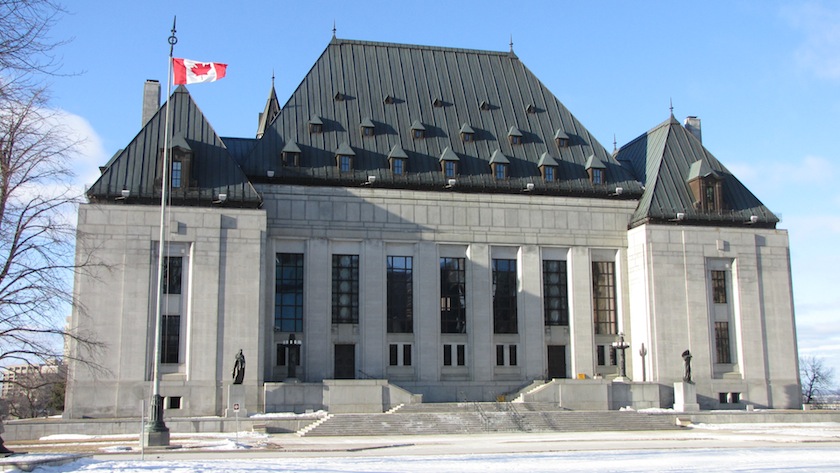The Vicious Circle of Stifling Even Ugly Free Speech
Reprinted from Calgary Herald: http://www.canada.com/components/print.aspx?id=e17f8274-5ff3-4c58-9942-6410dd3ec144&sponsor=
The vicious circle of stifling even ugly free speech
Tuesday, June 17, 2008
In the overzealous crusade to silence bigots, we see how the news media itself can become ensnared. However, since freedom of speech and freedom of the press are inextricably linked, it would be foolish and wrongheaded to think we can or should squelch the former and defend the latter.
Two cases here in Alberta illustrate this dilemma: the ongoing investigation into the (now-defunct) Western Standard magazine and the recent ruling against Rev. Stephen Boissoin.
The Alberta Human Rights and Citizenship Commission ruled against Boissoin for a letter-to-the-editor published in the Red Deer Advocate, which in my opinion certainly displayed a fair amount of intolerance toward and ignorance of homosexuals; views he should be free to express.
But what about the media? The case never proceeded against the Advocate because the paper agreed to a settlement.
However, as the Canadian Civil Liberties Association argued "even when a letter to the editor expresses a view that is reprehensible or unpalatable, they perform a vital function in society by stimulating debate and the exchange of ideas."
It should be obvious to anyone who reads a newspaper that the views expressed on the letters page in no way reflect the views of the newspaper itself. And of course, no one ever suggested that the Advocate agreed with Boissoin, so was the paper then guilty of something?
Section 3(1) of Alberta’s Human Rights, Citizenship and Multiculturalism Act lacks any sort of clear defence or exemption for legitimate journalistic purposes of publishing what may be offensive or even hateful content.
Contrast that with the Criminal Code provisions dealing with Wilful Promotion of Hatred. Four specific exemptions are laid out, which allow for truth as a defence, the expressing (in good faith) of a religious belief or opinion, if the statements were relevant to the public interest or a public discussion, or highlighting hateful speech for the purpose of condemning it.
If the mere appearance of the letter that day in the Red Deer Advocate is what constituted a breach of section 3 — a breach seemingly not ameliorated by any subsequent letters or commentary — then how is a news story quoting from the letter any different? The words are the crime, and context is seemingly irrelevant. Even the complainant admitted that "it’s not even about what were the intentions of the letter or the kind of person he is or what he believes."
Three other aspects of Alberta’s human rights act could offset this problem. Section 3 (2) reads "Nothing in this section shall be deemed to interfere with the free expression of opinion on any subject," although there has been much debate on the intent and effect of that wording.
Section 11 goes a bit further, allowing for an accused to show "that the alleged contravention was reasonable and justifiable in the circumstances." But again, the section is quite vague, and none of the relevant cases speak to the challenges posed here. In addition, Section 10 (2) reads "No person shall, with malicious intent, make a complaint . . . that is frivolous or vexatious."
It may end up falling to a judge to decide if those sections are relevant here. Should it ever really get that far? The answer may be that it wouldn’t, but the case against the Western Standard proves that it would and could.
When most media outlets are reporting the details of a case like Boissoin’s, it’s absurd to think that someone would file a human rights complaint against just one of them. But what if, say, the Calgary Herald were the only ones reporting the details? What if every other news outlet agreed the words were too anti-gay, and opted not to publish them? Wouldn’t the Herald seem a more likely target?
But how could the Herald (or anyone else) not quote from the letter? Oh sure, we could try and describe or characterize Boissoin’s letter (as I did, I suppose), but if the public is to accept the state’s involvement and verdict then Albertans need to be convinced of the alleged nature of the words, and that means seeing them.
Indeed, that direct parallel exists in the case against the Western Standard, which ended up being virtually alone in it’s "see-for-yourself" reporting of the Danish cartoon crisis, and therefore vulnerable to a human rights complaint.
What that case illustrates is that news coverage of controversial events can be affected by the fear of repercussions, and that lone rebels can and will attract the attention of the state.
More than anything else, though, it illustrates the need to eliminate Section 3 (1) — for the sake of freedom of expression and freedom of the press.
Rob Breakenridge hosts The World Tonight, weeknights from 6:30 – 9 p.m. on AM770 CHQR.
© The Calgary Herald 2008
|

